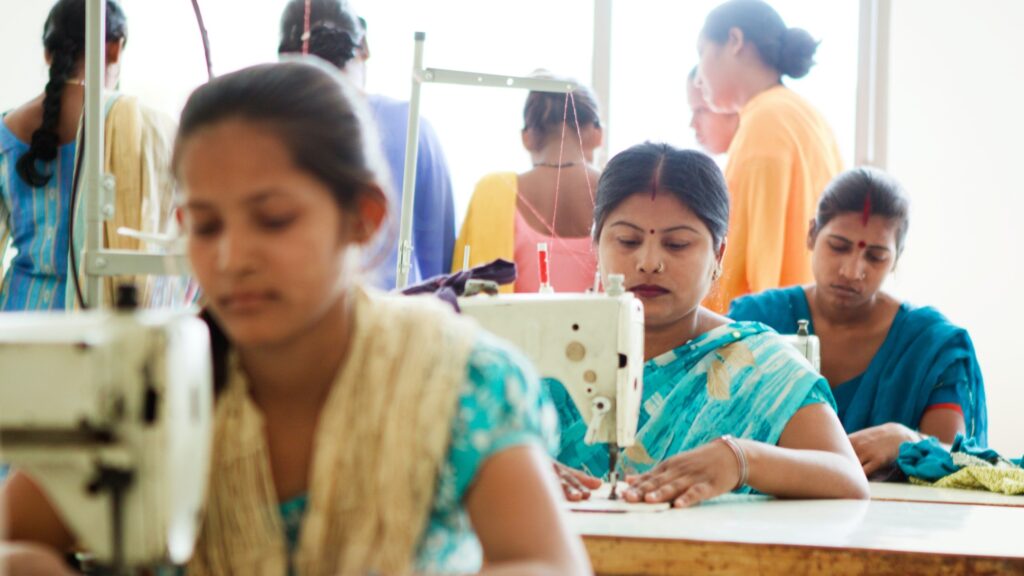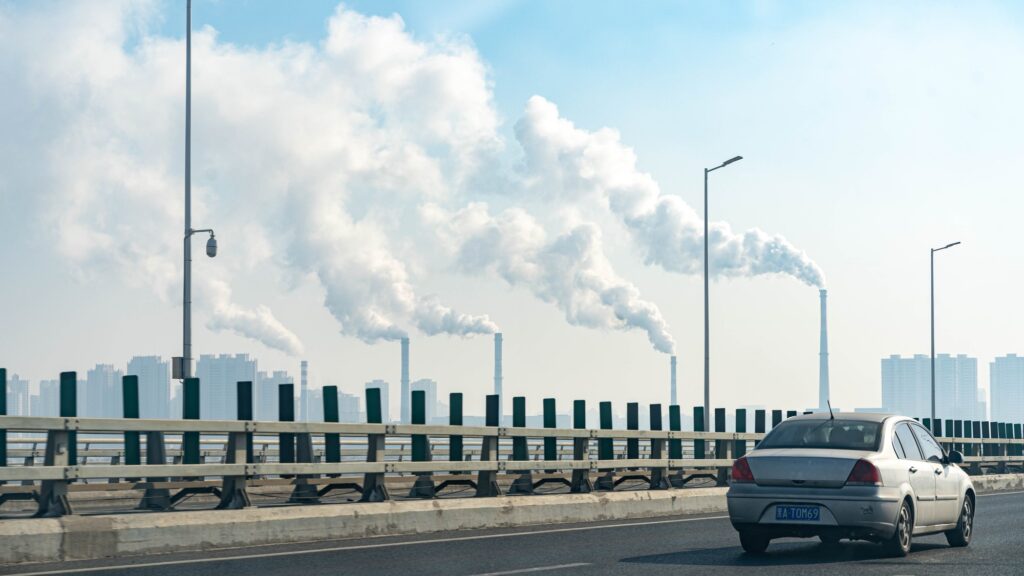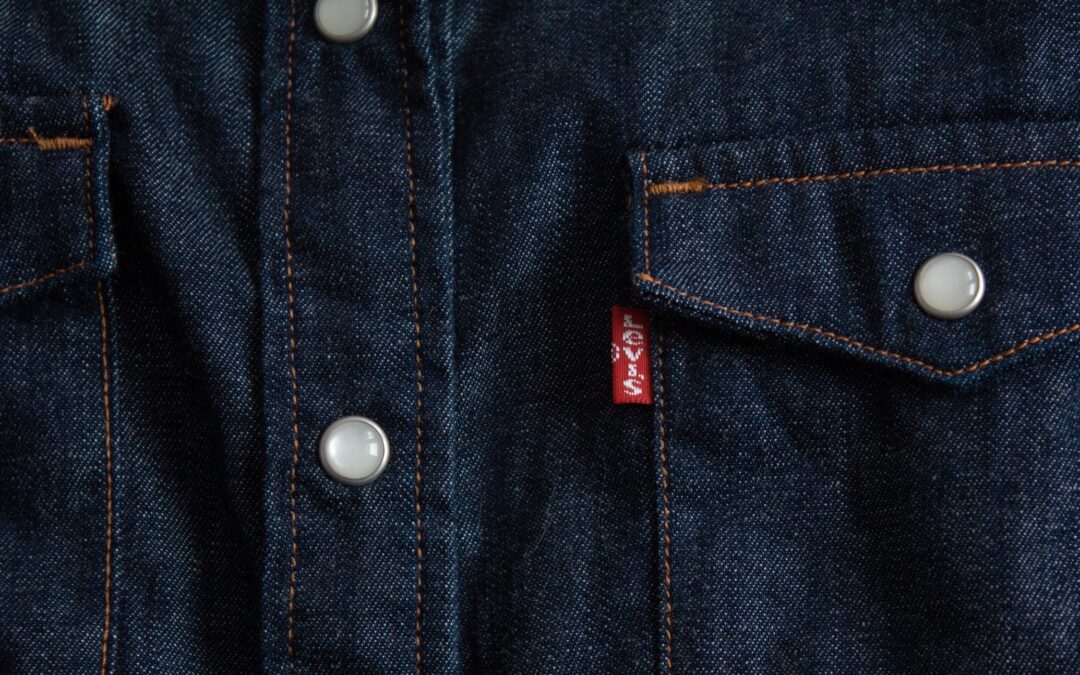
Fast fashion is destroying our planet

Most recent
Fast fashion is promoting hyper-consumerism, becoming a threat to our health and our planet. How is fast fashion hurting the environment, and can it ever become durable?
The fast fashion industry has seen tremendous growth in recent years with an esteemed market size of $91.23 billion and is expected to grow to $133.43 billion in 2026. Companies like Zara, Uniqlo, and H&M have created multi-billion fashion empires around cheap and trendy clothing.
The economics of fast fashion
Fast fashion clothing is specifically designed to take advantage of current and upcoming fashion trends. Investopedia explains that fast fashion collections are based on designs presented during Fashion Week runway shows, or resembling clothing items worn by celebrities.
Fast fashion brands are able to provide clothing at extremely low price points by cutting corners across the whole supply chain. In 2005, Harvard Business School looked at how Zara was able to optimize and utilize its supply chain advantage, allowing it to grow its business rapidly. At the time Zara operated 650 stores, averaging 1,000 square meters of retail space, across 50 countries. Its fashion teams cranked out 40,000 new designs per year, matching hough couture trends, of which 10,000 made it to the production stage. Harvard notes that Zara is able to outcompete established fashion brands by selecting lower-quality materials, allowing for a much lower price point. Its limited size options and color pallets ensure the company can quickly produce large quantities of clothing through a centrally orchestrated operation at its parent company’s headquarters in La Coruna, Spain.
Harvard explains its headquarters are separated into three designated halls, one hall for men’s fashion, another for women, and the third for children’s clothing. Each hall is like a fully operational conveyor belt, where dedicated teams oversee all aspects of the hall, from procurement to sales. Harvard notes that whilst this operation is more costly, as it is in continuous motion, the supply chain can react to disruptions more efficiently, ensuring steady operations that are in close proximity to each other.
By shipping out just small quantities of its products, Zara can keep overhead costs low. Harvard notes that if stocks run out at one of its stores, customers will opt for alternative products instead as there is always a steady flow of new clothing available. This operational model leaves Zara with less than 10 percent of unsold goods, compared to the average of 17 to 20 percent at competitors. Despite these very efficient operations, the speed to keep costs low and reinvent the entire line-up, drives manufacturers and brands to the extreme, searching for the limits within their supply chains.
China’s Ethiopia experiment
Fast fashion clothing is produced in low-wage countries, but even low-wage countries like China are sourcing fashion in lower-wage countries like Ethiopia. In a 2018 article published by Bloomberg, China poured $10 billion into the country to capitalize on the up-and-coming fast fashion market.
Through rapid construction, led by Chinese INOMA Engineering, Hawassa Industrial Park is the Ethiopian economic magnum opus. The Reporter says that the industrial park is part of an ambitious plan to turn the country into a manufacturing hub for the continent. Approximately 90 percent of manufactured goods in Hawassa will be destined for export. According to Ambassador Mesganu Arega, the project will create 30,000 jobs and generate $250 million in export revenues. The Reporter notes that Hawassa’s closeness to the nation’s capital, Addis Ababa, ensures a steady supply of skilled workers.

Bloomberg explains that Ethiopia had positioned itself as a source of “ultracheap labor”, with wages going as low as $25 per month and granting generous tax incentives. This attracted production from big-name brands like H&M, Levi’s, and others, poaching them away from earlier prime real estate locations like China and Sri Lanka. It’s therefore no wonder, China moved to this part of the world, to prevent it from losing out in the fashion manufacturing industry altogether. The Asian country itself is also facing tightened regulations surrounding environmental protection, which drove up manufacturing costs according to The Conversation.
China supplied the African nation with just over $10 billion in loans. The loans will, allegedly, help transform the nation from an agrarian-based society to a manufacturing-led economy, according to Belachew Mekuria from the Ethiopian Investment Commission. As much needed as the loans are to pull up Ethiopia, they aren’t without their drawbacks. According to Bloomberg, the loans are devoid of “philanthropic directives” compared to those granted by the World Bank. Oxford University development economist, Stefan Dercon, told the news outlet that the loans only paint an illusion of economic growth, but the debt will have to be repaid someday. Especially when wages will eventually increase and brands will search for newer, low-wage opportunities elsewhere, leaving Ethiopia with massive unfunded debt. But China is playing fast fashion on multiple levels, to keep its manufacturing business afloat and maintain its market dominance.
Ultra-fast fashion marketing
Recently an even faster version of fashion has made its worldwide debut, ultra-fast fashion. Ultra-fast fashion companies like the Chinese SHEIN have learned to quickly adapt to consumer demands at an accelerated pace through aggressive social media advertising and user-generated content that flaunt their newly acquired goods in showcase videos called “hauls”. Zainab Mahmood at The Guardian says that these videos are oftentimes sponsored by ultra-fast fashion brands and as disclosure remains absent, viewers aren’t aware they are watching extended ad reels.
SHEIN in particular has struck gold by utilizing the exponential growth of the social media platform TikTok. SHEIN is believed to closely monitor viral fashion content on TikTok, creating copies of clothing that saw the massive appeal on the platform. The ultra-fast fashion company is also closely working together with influencers, ensuring its products are featured wherever it can. Influencers accelerate the appeal of fast fashion by stepping up their “hauls” to “mega hauls” according to NSS Magazine. These popular vloggers don’t shy away from bulk purchases, unboxing upwards of 15 items per video. While fashion hauls are nothing new, NSS explains that YouTube hauls were mostly centered around exclusive low-volume items, while TikTok on the other hand, revolves around fast fashion products that retail at dumpster-like prices.
As these TikTok influencers have garnered a steady following through hauls featuring large quantities of products, SHEIN encourages similar content by supplying influencers with even more clothing items. NSS remarks, “Hauls are therefore not only a glorification of hyper-consumerism but also encourage emulation by followers, who tend to buy huge quantities of clothes at very low prices for the social (and social) status that comes with it.” The hashtag has been able to reach over 25 billion views and there are no signs of it slowing down any time soon.
Contaminated waters in China
The rapid rise of fashion, and ultra-fast fashion, is not only stimulating consumerism but also taking a huge toll on our planet. In September 2019, the World Bank headlined the devastating impact of the garment industry on the environment. They noted that the fashion industry uses 93 billion cubic meters of water, being responsible for 20 percent of global wastewater. This wastewater is destroying ecosystems in countries like China, where the fashion industry is the third-largest water polluter in the country.
Website Make. Good spoke to the author of the book Overdressed: The Shockingly High Cost of Fast Fashion, Elizabeth Cline, who experienced the dirty practices of Chinese fast fashion manufacturers firsthand. Cline witnessed how detrimental the fashion industry was to the environment when traveling through the country in 2011. She said, “I was working on Overdressed, and I went to the southern factory cities, around Shenzhen. The air and water pollution due to factory production was horrific. The environmental price that China was paying to be the factory of the world was clear.” Ecowatch notes that the textile industry discharges approximately 2.5 billion gallons of wastewater, contaminating 70 percent of its rivers and lakes.
In a 2017 report released by Greenpeace, the nonprofit found that 85 percent of water around Shanghai was graded level IV, and around Tianjin, 95 percent. Water ranked between I and III is considered safe for consumption, IV is meant for industrial usage, and water graded V is destined for agriculture. Toxics campaigner at Greenpeace East Asia, Deng Tingting wrote about the findings at The Guardian, noting that the government should employ greater transparency to hold local governments accountable. These local governments should strive for contamination-free water and if not meeting the mandated quotas, penalties should be issued. But this is easier said than done, as benchmarks are hard to come by.

In 2019, The Dutch Netherlands Enterprise Agency (RVO), part of the Ministry of Economic Affairs and Climate Policy, released a report highlighting the negative impact of waste released by the Chinese textile industry. As no earlier examinations exist, the researchers wanted to create an overall insight into textile waste. The team noted that across China highly toxic water and greenhouse gasses are being released during the manufacturing process and millions of tons of textile waste are dumped in landfills. The Chinese government has acknowledged the problem, aiming to create a durable circular system to decrease the strain of the textile industry on the scarce local natural resources. Although due to the complex nature of textiles, not all can be easily recycled.
The RVO cites figures provided by the Department of Circulation Industry Development of the Ministry of Commerce, stating that the textile recycling rate had increased by 29.6 percent between 2016 and 2017. The actual recycling rate remains unclear or inaccurate, therefore making a decisive case around the impact of the contamination and waste management efforts fairly difficult. This uncertainty stems from the lack of transparency provided by the parties involved. This corresponds with earlier findings from Greenpeace surrounding data transparency within government bodies. Tingting remarked in their findings that proper measurement equipment should be delivered to local governments, but it remains to be seen whether that will become a reality anytime soon. At the time of the RVO report, no such data was present. The fact remains that within China, water contamination and air pollution are serious issues and its textile industry is a large contributor to the problem.
Landfills full of clothing
Once the products are discarded, 87 percent are either burned or thrown in a landfill, the latter being a major problem for countries like Chile. National Geographic said that every second a full lorry of used clothing is incinerated or placed in a landfill. Waste incineration is controversial due to its adverse effects on public health and the environment, as harmful chemicals are released during the burning process. Incinerators emit persistent organic pollutants (POPs), a series of products that saw wide adoption after the Second World War. These pollutants found their way into pest and disease control, crop production, and other industries. POPs have been intentionally created for their designated purpose, but are also an unwanted byproduct of waste incineration.
According to the United States Environmental Protection Agency, POPs can result in disease or declines in animal populations. Humans exposed to the pollutants will experience problems with reproduction, stunts in development, or other neurological effects. Individuals with suppressed immune systems or other risk groups are particularly susceptible to damage to their reproductive systems. Communities most reliant on wild meat, fish, and shellfish are considered to be most at risk when it comes down to food consumption.
As of now, the fashion industry emits 10 percent of all annual global carbon emissions, which according to the World Bank is more than the aviation and maritime shipping industry combined. At its current growth rate, the carbon emissions share is expected to rise to 50 percent by 2030. The exponential growth of this industry is fueled by consumers wanting new clothes at an accelerated rate. With the low quality of fast fashion clothing, this desire for new clothing is only gaining more momentum with each discarded item.
Durable fast fashion
Fast fashion practices are detrimental to our environment, promoting extreme consumerism. Does the nature of fast fashion mean it can never become durable? There are outliers, such as the Japanese fast fashion brand Uniqlo, part of the Fast Retailing Group. Uniqlo operates in a nearly identical style as other fast fashion brands but is mostly geared towards its domestic market, compared to competitors like Zara, with its global approach.
In 2019, the Japanese brand operated over 2,000 stores across 15 countries. Uniqlo’s R&D department is constantly tapping into consumer trends, having a one-year in-advance concept meeting for the launch of the actual product. The company prides itself on saying it is investing huge effort to source “top-quality materials”, through direct negotiation with materials manufacturers. It notes that through economies of scale, it is able to get a lower price. The Atlantic says that this made Uniqlo synonymous with affordable and durable clothing. Uniqlo itself claims that through technological innovations it is able to maintain a reliant and sturdy product. It also says that it is working closely with the Kaihara Corporation for its denim sourcing.
Established fast fashion brands like H&M are exploring products that are biodegradable. In 2022, H&M announced it would release a new baby clothing line that can be used for composting when discarded. H&M’s US head of sustainability, Abigail Kammerzell, told CNN, this would become its first collection that is compostable. She elaborated by saying that the company hopes the new clothing line will set a new standard within the fashion industry, aiming to become a leader in sustainability, preventing clothing from being thrown into landfills en masse. Kammerzell further noted that H&M had tripled its share of recycled materials, coming from 5.8 percent to 17.9 percent in 2022, aiming to reach 30 percent by 2025.
Founder and CEO of nonprofit recycling service, FABSCRAP, Jessica Schreiber was glad to see H&M taking a stance and making a case for durable fashion, but urged for realism. Schreiber told CNN, “It’s always a step forward for a company as big as H&M to show it is making an effort. But fast fashion retailers also put out so much clothing regularly.” Adding that slowing down production output is the real solution. As of now, less than 1 percent of clothing is recycled, equating to upwards of $500 billion in capital loss.
Fast fashion needs to stop
Countries like Ethiopia cannot be blamed for trying to search for new economic opportunities. We might find the low wages distasteful, keeping harmful manufacturing jobs afloat, but they at least deliver steady income for otherwise impoverished communities living a subsistence lifestyle. Creating a skilled labor force in the process, that with generations to come, can pull itself up the economic ladder.
The true solution is “voting with your wallet”. By buying into aggressive marketing tactics employed by companies, enabling influencers to create extreme content, consumers keep an industry alive that is not meant to exist when considering all the moving parts that are necessary to create the goods. Clothing can be expensive, but by investing the extra dollar into a durable, ethically manufactured product, you promote brands that are trying to be a force for good. For people and the planet.
Further reading

How Levi’s wants to become more sustainable
Levi’s has been criticized for its usage of toxic chemicals. But in recent years it has made great leaps to become...

H&M’s quest to greenwash fast fashion
H&M has been rebranding itself as the eco-conscious fast fashion company. Behind the scenes, it is a waste...

How Lacoste plans to become more sustainable
Lacoste is one of the most well-known fashion brands, with a global environmental impact to match. Lactose has...
Most recent

How Myanmar lost 30% of its forest in 30 years
Myanmar is seeing deforestation rates increase rapidly. In the last three decades, the country already lost 30 percent...

Portugal’s struggle to part with fossil fuels
Portugal is heavily reliant on fossil fuels and its love affair with the fossil fuel industry makes transitioning to...

Climate change spells uncertain future for winemakers
Winemakers ride into an uncertain future as climate change spells greater uncertainty for their businesses. Climate...


